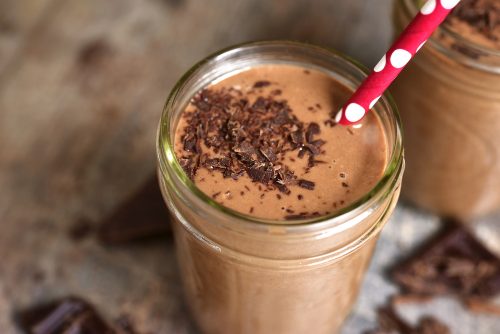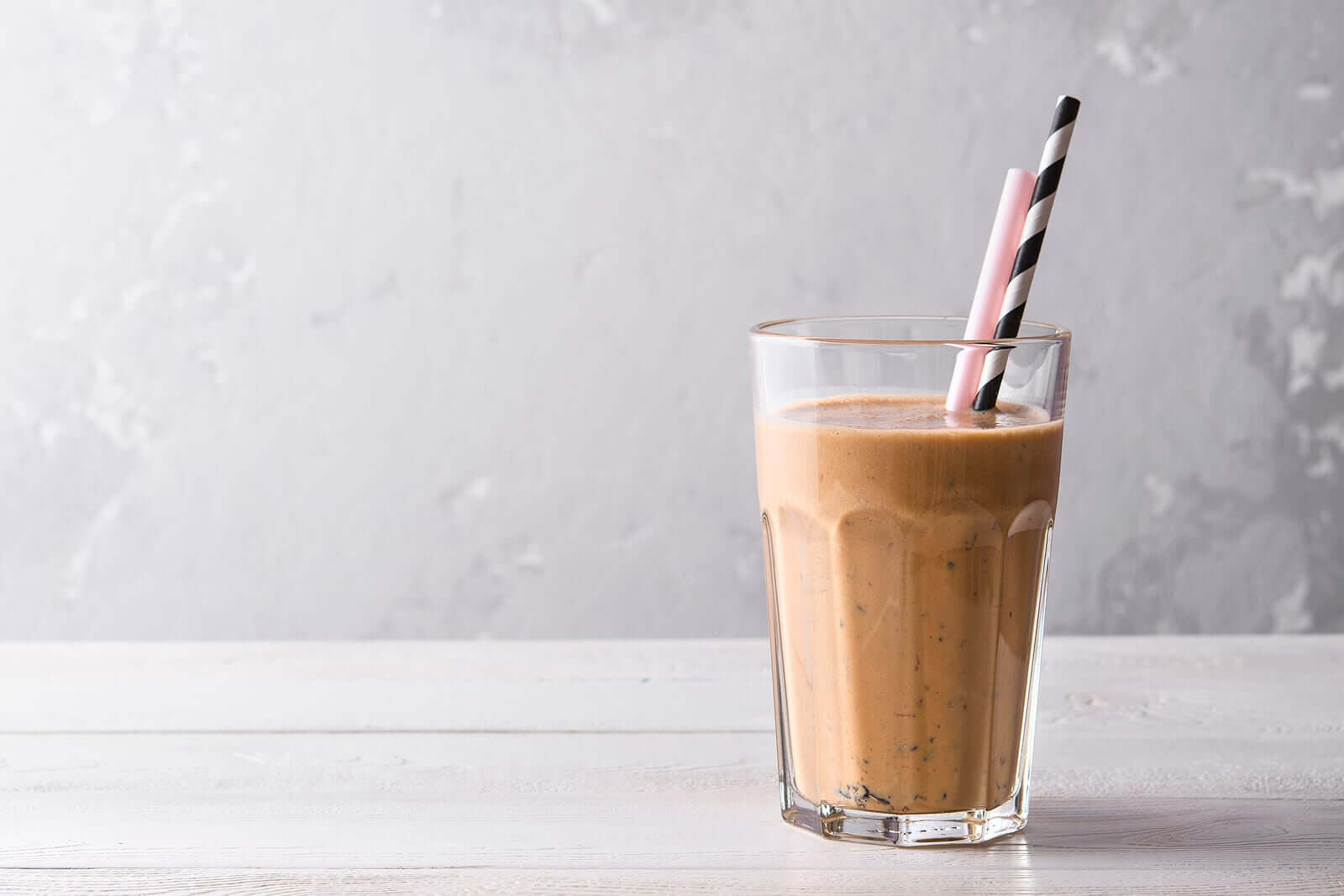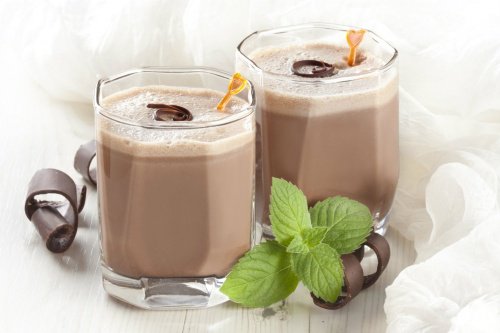5 Reasons Why You Shouldn’t Give Your Kids Chocolate Shakes


Written and verified by psychologist Valeria Sabater
You might get tired of this sort of news warning about the dangers of certain foods from time to time. Do you know why your children shouldn’t drink chocolate milkshakes every day?
As mothers and fathers, we’re sure that, on more than one occasion, you’ve read the nutritional information of, for example, the individual juice-box size portions we usually put in their backpacks.
Everything seems positive to us, we know that they contain those stabilizers that maintain their appearance and texture, but… Is there anything else they’re not telling us? In the following article, we’ll tell you what you need to know.
An analysis of chocolate milkshakes

1. Carrageenan, something not recommended for children in food
If you’ve never heard of carrageenan, it’s a natural product made from different types of algae. Algae in dairy products? It’s true.
In spite of being a natural food, you should know that the World Health Organization advises against giving it to your child. This is because carrageenan:
- Changes their intestinal flora, according to a study published in the journal Carbohydrate Polymers.
- Causes poor digestion
- Causes gas
- Leads to diarrhea
Read also: Teach Your Children to Dream, Not Fear
You might wonder what the recommended daily amount for kids is in order to avoid experiencing those effects. For the time being, health authorities have not agreed on this.
2. Chocolate shakes contain casein
There’s no doubt that you already know this information. Chocolate shakes are still milk products, so they’re rich in casein, a milk protein.
The effects of this protein on the body vary greatly from person to person, but in children, the following effects are often observed:
- Irritated bowel
- Affected immune system
- Allergies
- Eczema or bronchitis, all of which are influenced by an allergy to this dairy product
Not all children will develop these types of allergies or reactions, but it’s a fact that we must take into account in order to at least regulate its consumption.
In spite of everything, the most current studies recommend the intake of this type of protein to help preserve muscle mass. For this reason, there’s some disagreement as to its consumption. Until a few years ago, whey protein was more highly valued than casein, but lately, the recommendations are beginning to change.
3. Chocolate shakes contain too much sugar
You won’t be surprised to learn that chocolate shakes contain sugar, but did you know that a 200 ml serving contains almost 30 grams of sugar?
That amount is way too high, and it’s even worse if your kids drink these on a regular basis.
- Sugar causes insulin resistance, so you run the risk of your children getting metabolic syndromes and diabetes.
- Sugar increases the concentration of bile in feces and bacterial enzymes in the colon, according to a study published in 2018.
- Chocolate shakes contain corn syrup, a rich type of sweetener. This compound can cause liver damage in the long term.
- You run the risk of having obese children.
Discover: 5 Benefits of Eating Apples
4. Chocolate shakes don’t help children have strong bones

It’s customary for dairy companies that produce these types of beverages to sell us their benefits with phrases like “they promote bone growth” or “your child’s bones will grow stronger.”
- Review this kind of information with caution and skepticism. The calcium in this type of shake isn’t easy to absorb. In fact, it’s more commonly lost.
- Amy Lanou, Director of the Nutrition Center for the Committee of Physicians for Responsible Medicine, points out that countries with the highest rates of osteoporosis are those in which people drink more packaged milk, i.e. these types of shakes.
- Chocolate milkshakes aren’t a good source of calcium. Plain yogurt, or even calcium from vegetable sources, would be a better option. In addition, it’s important to remember that the best way to assimilate calcium from food is to combine its intake with the consumption of products rich in Vitamin C.
5. Chocolate milkshakes might not even taste like chocolate
The flavor is completely artificial. In fact, manufacturers often use chemicals and other aromatic elements reminiscent of chocolate without using the real thing. The same thing happens with other flavors, such as strawberry and vanilla.
It’s common for these beverages to contain substances like hydrolyzed vegetable protein or monosodium glutamate. And here’s another fact that’s even more worrying: food manufacturers don’t have to reveal the ingredients that they use to create those flavors.
These are confidential formulas so that they can compete with other brands. This is what happens with Coca-Cola, for example.
Prepare your own shakes instead of buying them

You don’t need to give up on dairy products, but it’s worth consuming the healthiest ones that you know have more calcium and also care for your children’s intestinal flora.
You could make a smoothie using natural plain yogurt and add some cocoa powder and a bit of oatmeal. They’ll love it.
Plant-based milks are also a very suitable option, as long as they don’t contain added sugar. Another idea is to prepare natural juices at home.
Finally, we want to point out that consuming a chocolate shake from time to time doesn’t involve any risk. The danger comes when those beverages become daily habits in the diet of your children.
All cited sources were thoroughly reviewed by our team to ensure their quality, reliability, currency, and validity. The bibliography of this article was considered reliable and of academic or scientific accuracy.
- Shang Q., Jiang H., Cai C., Hao J., et al., Gut microbiota fermentation of marine polysaccharides and its effects on intestinal ecology: an overview. Carbohydr Polym, 2018. 179: 173-185.
- Klingbeil E., La Serre CB., Microbiota modulation by eating patterns and diet composition: impact on food intake. Am J Physiol Regul Integr Comp Physiol, 2018. 315: 1254-1260.
This text is provided for informational purposes only and does not replace consultation with a professional. If in doubt, consult your specialist.








